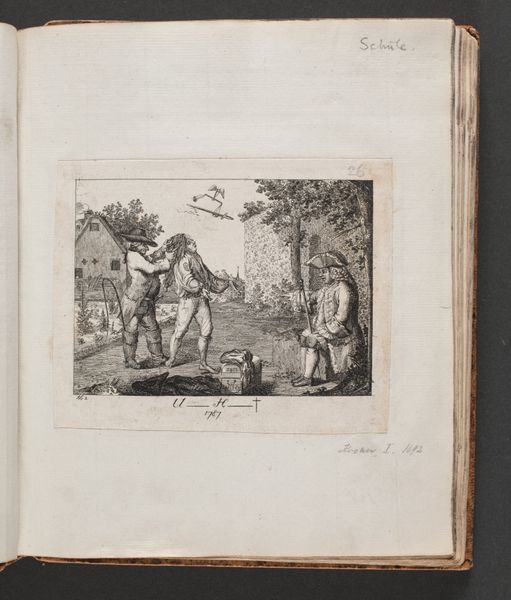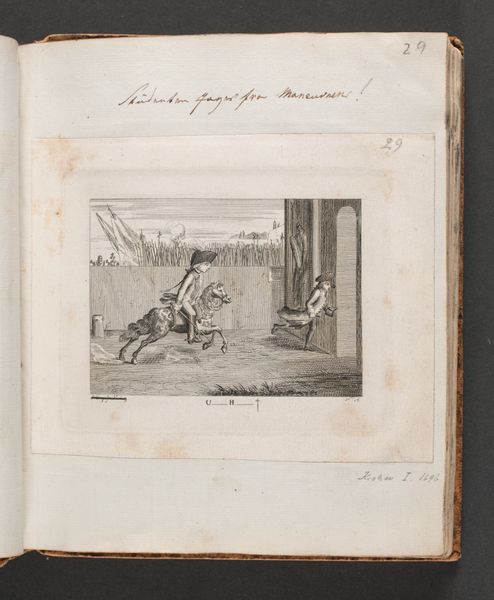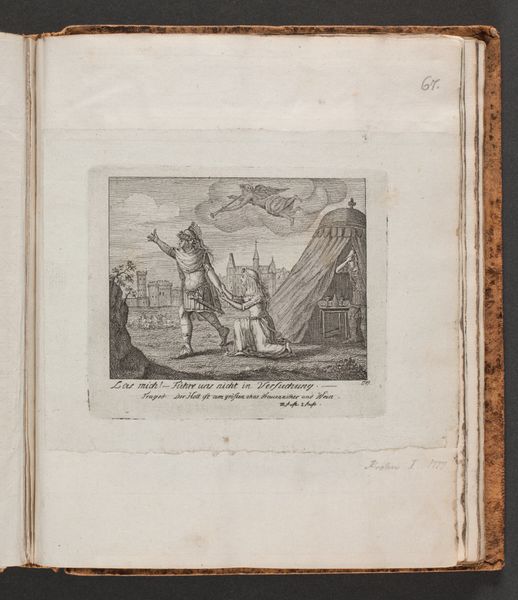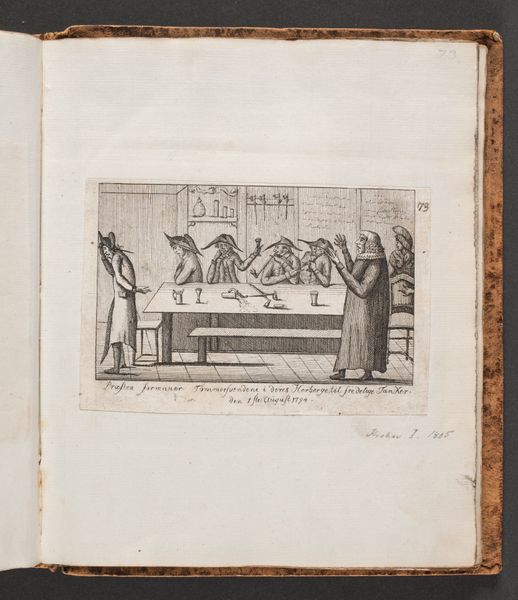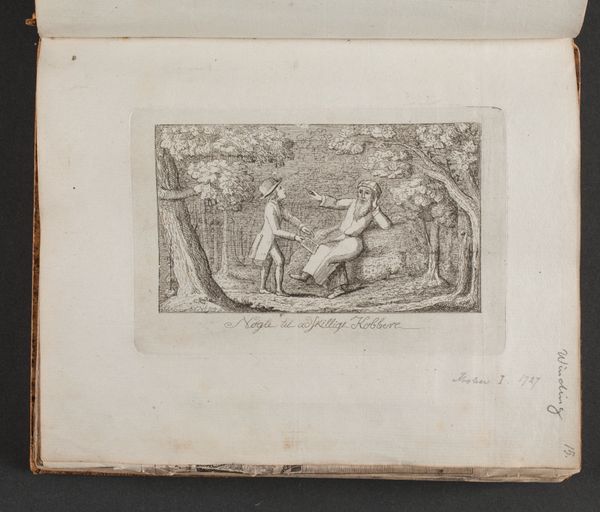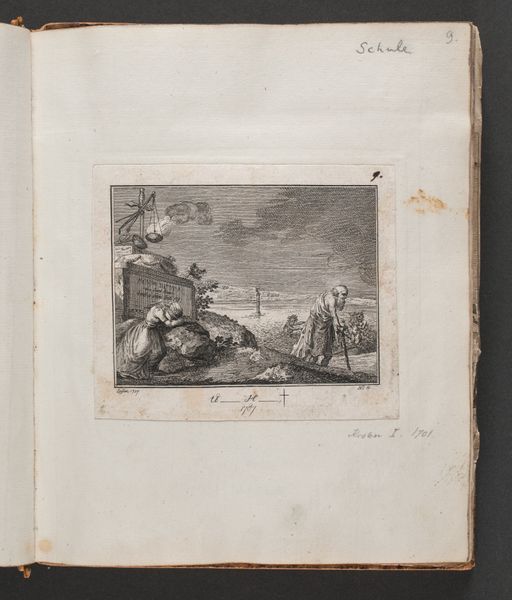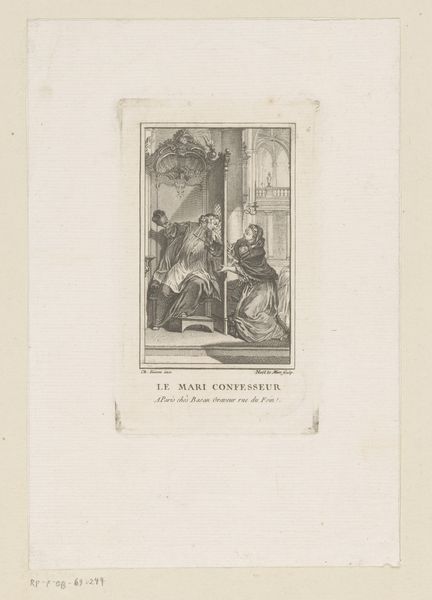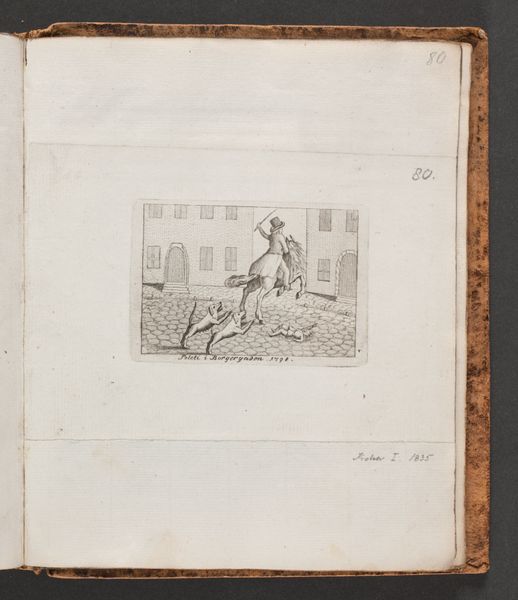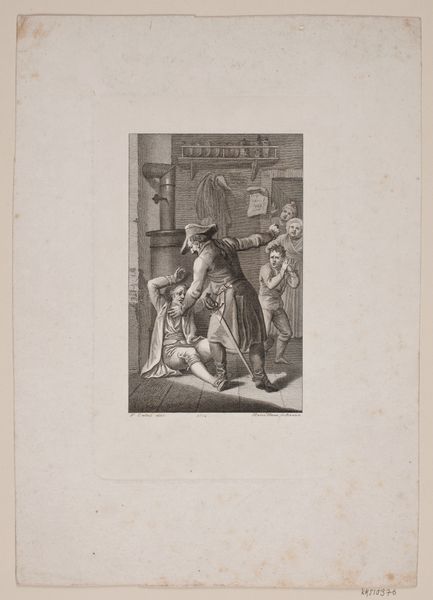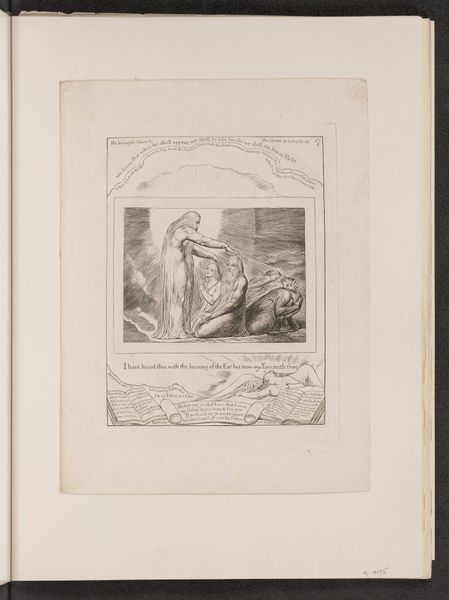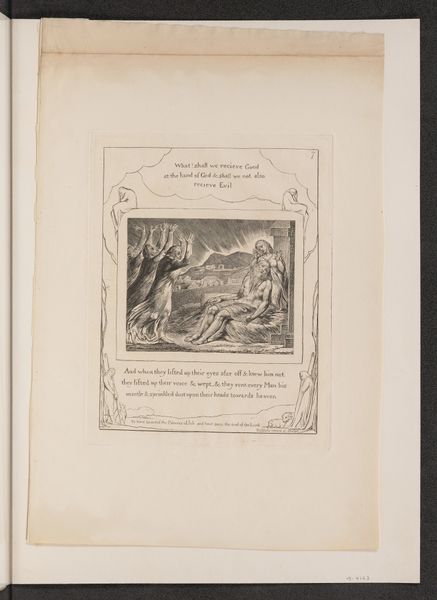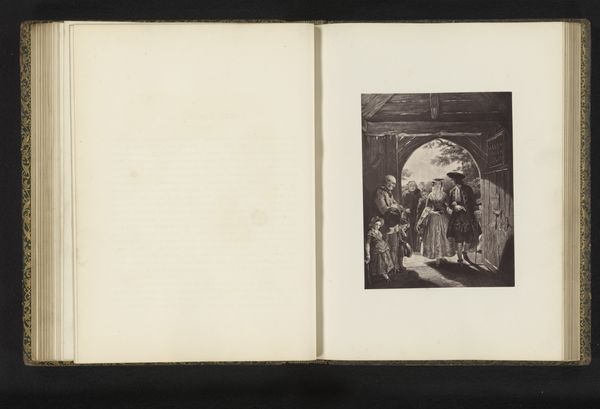
Dimensions: 105 mm (height) x 125 mm (width) (bladmaal)
This print, "U(llykkelig) H(ændelse)" Nr. 12, was made by Georg Christian Schule, likely around 1792, using an engraving technique. Engraving involves meticulously incising lines into a metal plate, in this case probably copper, with a tool called a burin. Ink is then applied to the plate, pushed into the etched lines, and the surface wiped clean. When paper is pressed against the plate, the image transfers, creating a fine, detailed print. The stark contrast of the black ink against the white paper, and the precision of the engraved lines, lend a dramatic, almost theatrical quality to the scene. The labor-intensive nature of engraving meant prints like these were often luxury items, circulated among a relatively elite audience. The image is of a dramatic scene, perhaps from a play, in which fashionable people are confronting loss. Consider the skilled hand and time required to produce each print, a reminder of the craftsmanship embedded even in what might seem like a simple image. Appreciating the material and the making helps us understand its original social context.
Comments
No comments
Be the first to comment and join the conversation on the ultimate creative platform.
